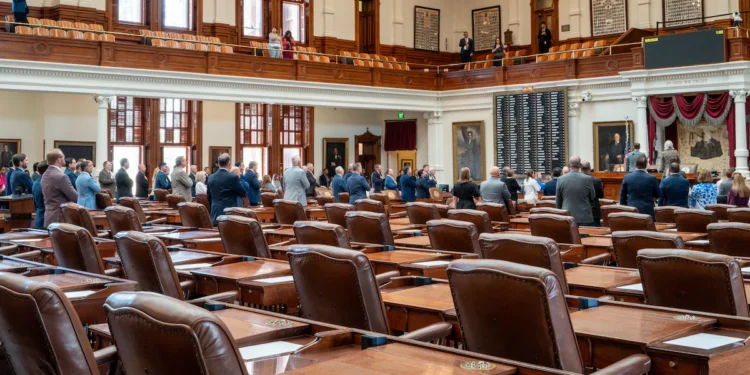Texas is in the middle of a political fight that could shape the direction of Congress for years to come. Republican lawmakers in the state are pushing to redraw congressional maps in a way that could flip five Democratic-held districts into Republican control. In a dramatic move to block the plan, more than 50 Democratic legislators have left Texas, heading to Illinois to prevent a vote from taking place.
Redistricting, and Why It Matters
Every decade, states are required to redraw congressional district boundaries after new census data is released. These maps determine which communities each member of Congress represents, and how the lines are drawn can heavily influence which party wins a seat. Strategically grouping, or “packing”, certain voters together can tilt the outcome in favor of one political party.
What makes the current Texas battle unusual is that this redistricting push is happening mid-decade, not right after a census. That timing is rare, and critics say it raises major fairness concerns.
The Republican Proposal
Republican lawmakers say the plan would reshape several key Democratic districts by bringing in more Republican voters. If implemented, the GOP would go from controlling 25 of Texas’s 38 House seats to holding 30.
The proposed changes would alter the political landscape for several prominent Democrats:
- Al Green of Houston would see his district shift to include fewer Black voters and more white and Latino residents.
- Lloyd Doggett and Greg Casar of Austin would have their separate districts combined, potentially forcing them into a head-to-head race.
- Henry Cuellar and Vicente Gonzalez in South Texas would face more Republican-leaning territory.
- Julie Johnson from the Dallas area would see her district redrawn in a way that benefits Republicans.
Democrats Fight Back
In an attempt to stall the process, Texas Democrats have fled the state, denying Republicans the quorum needed to vote. This is not their first time using this tactic, a similar walkout happened in 2021, although lawmakers returned after six weeks. While those involved could face legal challenges, removing them from office would be difficult.
Why This Battle Matters Beyond Texas
Control of Congress is at stake. Republicans currently hold a slim majority in the U.S. House, and flipping these five seats could help secure that edge through 2026 and beyond. Former President Donald Trump has personally backed the redistricting effort.
There are also racial and voting rights concerns. Texas’s population growth in recent years has been driven largely by people of color, yet the proposed map would increase the number of majority-white districts from 22 to 24. Civil rights groups argue this would dilute minority voting power.
If Texas moves forward successfully, other states could follow suit. California’s governor has already hinted at a possible redistricting move favoring Democrats, raising the prospect of a national “redistricting arms race.”
What Happens Next
The Texas House could vote on the new maps as soon as this week, if Democrats return. Any plan would also need Senate approval before reaching Governor Greg Abbott, who has signaled support.
Democrats say they will take the matter to court if the plan passes. Judges could block or modify the maps, especially since the current districts are already being challenged in federal court.
If the new boundaries survive legal challenges, the 2026 elections would be fought in very different political terrain. Some Democratic incumbents might opt not to run at all, potentially reshaping which party holds the House for the remainder of the decade.
The Bigger Picture
This fight is about more than just district lines, it’s about whether a state can use redistricting to lock in political dominance despite shifting demographics. For Texas voters, it could mean new representatives, new districts, and a significant change in how much influence their communities hold at the ballot box.







